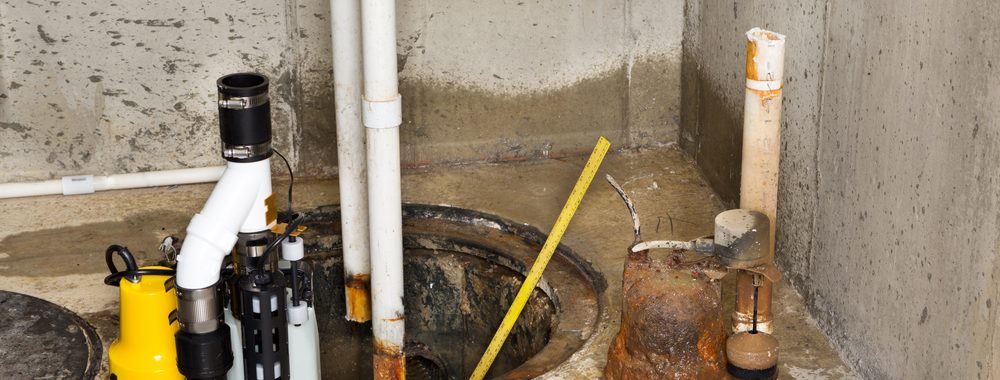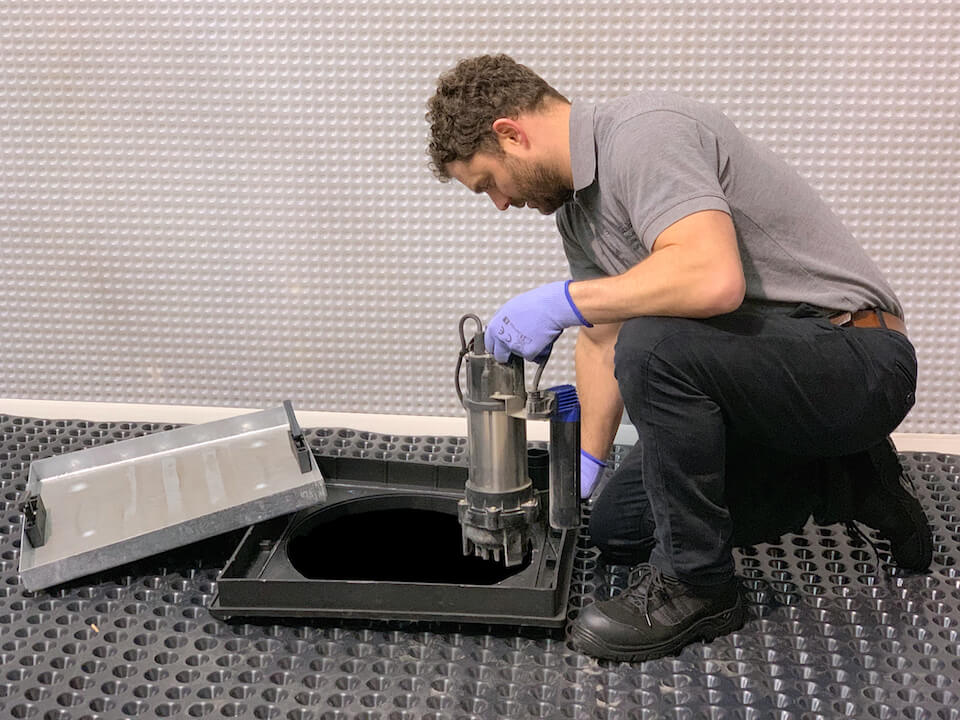Our Comprehensive Guide to Cleaning a Sump Pump
Our Comprehensive Guide to Cleaning a Sump Pump
Blog Article
We have discovered the article on Keep Your Sump Pump Clean, It'll Keep You Dry down the page on the net and think it made perfect sense to talk about it with you here.

Sump pumps are vital components in numerous homes, specifically in areas prone to flooding or excessive wetness. They assist avoid water damages by effectively getting rid of excess water from basements or crawl spaces. Nevertheless, like any other device, sump pumps call for routine maintenance to ensure they work successfully when needed the most. Cleaning your sump pump is a vital part of its upkeep, and recognizing exactly how to do it appropriately can conserve you from expensive repair work and prospective calamities.
Introduction
Maintaining a tidy sump pump is vital for its proper functioning and longevity. Disregarding this necessary task can result in clogs, malfunctions, and inevitably, water damages to your property. For that reason, finding out exactly how to clean a sump pump is crucial for homeowners who rely upon these gadgets to keep their basements completely dry and secured.
Understanding the Sump Pump
Before diving right into the cleansing process, it's necessary to have a fundamental understanding of just how a sump pump functions. Generally mounted in a pit or basin below the basement flooring, a sump pump includes a number of vital components, including a pump, a float button, and a discharge pipe. When water gathers in the pit, the float button activates the pump, which then pumps the water out through the discharge pipeline, away from the building's foundation.
Signs of a Dirty Sump Pump
Recognizing when your sump pump needs cleaning is essential for avoiding potential breakdowns. Some usual signs that indicate an unclean sump pump consist of weird sounds during procedure, minimized water circulation, and noticeable particles in the pit. If you notice any one of these signs and symptoms, it's necessary to clean your sump pump promptly to avoid any kind of more concerns.
Preparing for Cleaning
Before you start cleaning your sump pump, it's vital to take some safety and security preventative measures. Begin by shutting off the power to the pump to stay clear of any type of electrical accidents. Furthermore, wear appropriate protective gear, such as handwear covers and goggles, to shield on your own from dust, debris, and possible pathogens.
Step-by-step Guide to Cleansing a Sump Pump
Shutting Off the Power
Begin by detaching the power supply to the sump pump to avoid any type of mishaps while cleansing.
Eliminating Debris and Dust
Make use of a container or an inside story to eliminate any visible debris, dust, or sediment from the sump pit. Dispose of the debris properly to avoid it from blocking the pump or the discharge pipe.
Cleaning the Pump and Drift Change
When the pit is free from particles, carefully remove the pump from the pit. Check the pump and the float switch for any kind of indicators of damages or wear. Use a soft brush or towel to clean the surfaces and get rid of any built up gunk.
Purging the System
After cleaning up the pump and float button, purge the sump pit with clean water to remove any staying dust or debris. This will assist make sure that the pump operates efficiently and efficiently.
Looking For Appropriate Performance
Before reinstalling the pump, carry out a quick examination to ensure that the float button activates the pump correctly. Put some water right into the sump pit and observe the pump's procedure. If every little thing is operating correctly, you can rebuild the pump and reconnect the power supply.
Maintenance Tips to Maintain Your Sump Pump Clean
In addition to routine cleaning, there are numerous maintenance tips you can comply with to keep your sump pump in ideal problem:
Conclusion
Cleaning your sump pump is an important aspect of its upkeep and ensures that it runs properly when you require it one of the most. By following the steps described in this guide and integrating normal maintenance right into your routine, you can prolong the life expectancy of your sump pump and safeguard your home from water damages.
6 STEPS ON HOW TO CLEAN A SUMP PUMP PROPERLY
UNDERSTANDING SUMP PUMPS
Your sump pump plays a crucial role in protecting your home by managing and removing excess water. It primarily functions as a “shield”, guarding your basement against the damaging effects of water accumulation. The pump is housed in a sump pit in the lowest part of your basement, and its job is to pump out any water that collects there.
During heavy rainfalls or when snow melts rapidly, water can infiltrate your basement, posing potential risks like flooding, structural damage, and harmful mold growth. Here, the sump pump springs into action, pumping out the intruding water and directing it away from your home.
SAFETY FIRST
Before cleaning, remember to prioritize safety. Disconnect the sump pump from the power source to prevent any accidental electric shocks. Also, wear sturdy gloves to protect your hands from any sharp or dirty components within the pump.
REMOVE THE SUMP PUMP
After ensuring your safety, the next step is to remove the sump pump from its pit. Doing this might require careful maneuvering as you don’t want to damage any pump components. Once removed, clean the sump pit to remove any accumulated debris or sludge.
INSPECT THE PUMP
Inspect the pump for any visible signs of wear or damage. Check the power cord, float switch, and impeller housing. If any components look worn out or damaged, consider replacing them to ensure optimal performance.
CLEAN THE PUMP
Thoroughly clean the pump with warm, soapy water. Make sure to rid it of any dirt, gravel, or other debris that might impede its performance. You can use a toothbrush to clean the small, hard-to-reach parts of the pump.
REINSTALL THE SUMP PUMP
Reinstall the pump into the sump pit Make sure it’s positioned correctly to remove the water effectively Once it’s back in place, reconnect it to the power source TEST THE PUMP
Finally, pour some water into the pit to ensure the pump works correctly. It should start automatically and begin pumping out the water; if it doesn’t, check the power source and the positioning of the pump.
Remember, while cleaning your sump pump is an essential part of home maintenance, hiring a professional plumber for a thorough inspection and cleaning at least once a year is also important. This will ensure that your pump is in optimal condition, ready to protect your home from potential water damage.
BEST PRACTICES FOR CLEANING SUMP PUMP DISCHARGE PIPES
Regular Inspection: Regularly inspect your discharge pipes, especially during heavy rainfall or snowmelt periods. Look for any signs of blockage or damage. Early detection of problems can prevent serious issues down the line. Periodic Cleaning: Over time, sediment and debris can accumulate in the discharge pipes, impeding the flow of water. Regular cleaning helps keep the pipes clear and functioning efficiently. You can use a high-pressure water jet to effectively clean the pipes. Insulation During Winter: In colder climates, discharge pipes can freeze, blocking the outflow of water. Protect your discharge pipes from freezing temperatures by insulating them with foam pipe insulation. This will ensure the sump pump can continue to discharge water even in freezing conditions. Proper Positioning: The discharge pipe should be positioned to direct water away from your home’s foundation. Improper positioning can lead to water seeping back into the basement. Ensure the pipe is long enough and angled correctly. Installation of a Check Valve: A check valve prevents water from flowing back into your sump pit after the pump has pushed it out. Installing a check valve helps maintain the efficiency of your sump pump and reduces the risk of flooding. Minimize Pipe Turns: Every curve or turn in the discharge pipe can decrease the efficiency of water flow. By minimizing turns and bends in your discharge pipe, you can increase the efficiency of your sump pump. https://www.fullspeedplumbing.com/how-to-clean-a-sump-pump-properly9999/

As a fervent person who reads on How to Care for Your Sump Pump, I thought sharing that piece of content was valuable. Sharing is caring. Who knows, you will be doing someone a favor. Thank you for being here. Please visit our site back soon.
Visit Our Site Report this page